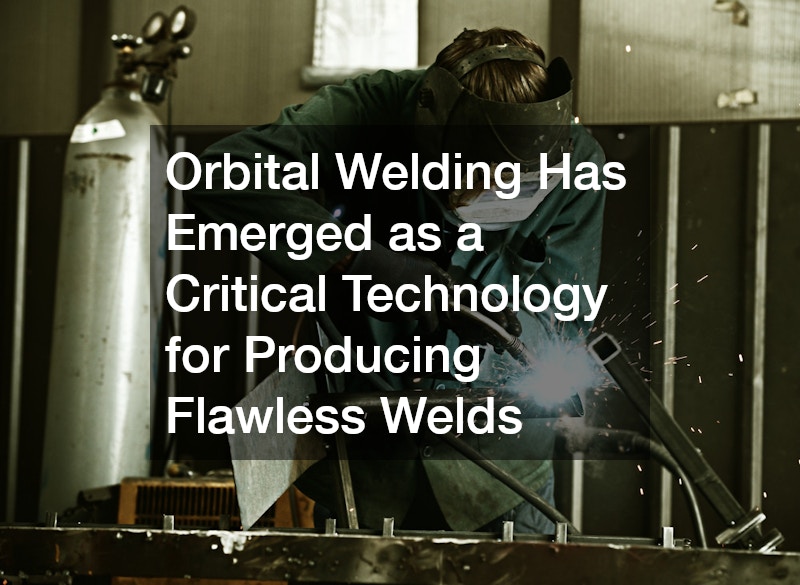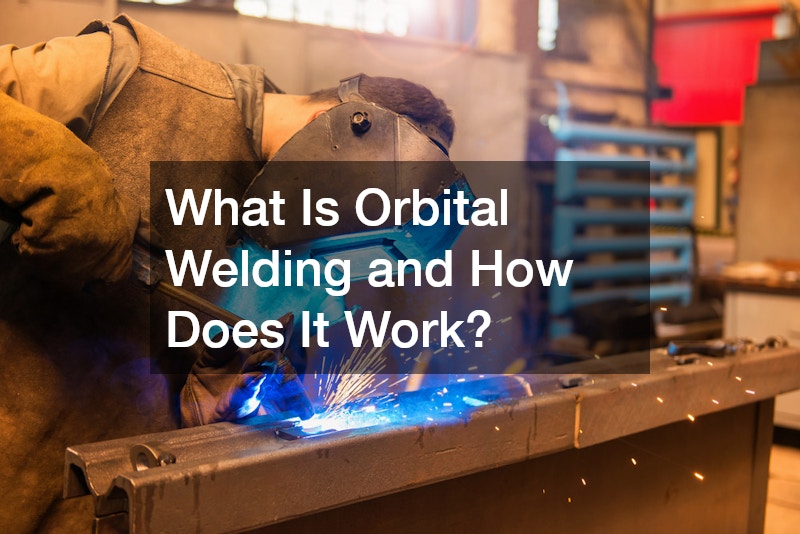In modern manufacturing, precision and consistency are more important than ever. As industries demand higher quality and efficiency, orbital welding has emerged as a critical technology for producing flawless welds in applications where human error simply isn’t acceptable.
From aerospace and pharmaceuticals to semiconductors and food processing, orbital welding delivers consistent, repeatable, and high-quality results that manual methods struggle to achieve. Understanding how this process works—and why it’s so valuable—can help engineers, technicians, and manufacturers make informed decisions about integrating it into their operations.
What Is Orbital Welding?
Orbital welding is a specialized, automated welding process in which the welding electrode or torch rotates mechanically around a fixed workpiece—usually a tube or pipe—to create a seamless weld joint.
Unlike manual welding, where a human welder guides the torch, orbital welding uses precise mechanical motion and computer-controlled parameters to ensure consistency. The process is commonly associated with TIG (Tungsten Inert Gas) or GTAW (Gas Tungsten Arc Welding) methods, as these produce exceptionally clean and strong welds.
The term “orbital” refers to the circular movement of the electrode around the joint. Because the system is automated, every weld is performed under identical conditions, minimizing defects and ensuring repeatability—something that is particularly important in industries where weld integrity affects safety or product purity.
History and Development
The origins of orbital welding date back to the 1960s, when the aerospace and nuclear industries sought more reliable ways to join tubing systems used in critical environments. Manual welding often led to inconsistencies that could cause leaks or structural weaknesses.
Engineers began experimenting with mechanical welding heads that could rotate around stationary pipes while maintaining precise heat and speed control. The result was a new level of automation and accuracy in the welding process.
Over the decades, advances in microprocessors, software, and sensor technology transformed orbital welding from a niche process into a mainstream industrial technique. Modern systems now feature digital interfaces, real-time data monitoring, and programmable settings that allow operators to store and replicate exact welding parameters for future use.
Key Components and Equipment
An orbital welding system typically includes several crucial components that work together to automate the process:
-
Power Supply and Control Unit
This serves as the brain of the system, regulating current, voltage, gas flow, and rotation speed. Modern control units often include programmable logic controllers (PLCs) and touchscreen interfaces for easy setup. -
Welding Head
The welding head holds the electrode and performs the orbital motion around the pipe or tube. There are two main types:-
Closed heads are used for small-diameter, high-purity applications such as semiconductor or pharmaceutical tubing.
-
Open heads are suitable for larger pipes and heavier-duty applications like oil, gas, and power generation.
-
-
Tungsten Electrode
Used in TIG welding, the electrode generates the arc that melts the material, creating the weld joint. -
Shielding Gas System
Inert gases—typically argon or helium—are used to protect the weld from oxidation and contamination. -
Cooling and Clamping Systems
These ensure stable operation by preventing overheating and securing the tube or pipe in place during welding.
How Does Orbital Welding Work?
Automated Process
At the heart of orbital welding lies automation. Once parameters are programmed into the control unit, the machine automatically adjusts factors like current, arc length, and rotation speed to ensure consistent results.
Automation eliminates many of the variables that can affect manual welding quality, such as operator fatigue, inconsistent hand movement, or fluctuations in torch angle. This is particularly valuable for applications requiring long, continuous welds or work in confined spaces where human access is limited.
Setup and Operation
The process begins by preparing and aligning the tubes or pipes to be welded. Cleanliness is essential—any contamination can compromise the weld’s integrity. Once clamped securely in the welding head, the operator enters the required welding parameters into the control unit, including:
-
Tube diameter and wall thickness
-
Weld current and speed
-
Shielding gas flow rate
-
Rotation speed and dwell time
After setup, the machine ignites the arc, and the electrode rotates 360 degrees around the joint, fusing the materials together in a smooth, uniform bead. Once complete, the weld is inspected visually or via non-destructive testing (NDT) to verify quality.
Applications and Advantages of Orbital Welding
Industry Use Cases
Orbital welding is used wherever precision and consistency are paramount. Common applications include:
-
Aerospace: Welding hydraulic and fuel lines where strength and leak-free performance are critical.
-
Semiconductor Manufacturing: Creating ultra-clean stainless steel tube systems for transporting gases and chemicals.
-
Pharmaceutical and Food Processing: Producing sanitary piping systems free of contamination or residue.
-
Power Generation and Nuclear: Ensuring durable, high-integrity welds in pressurized piping systems.
In each of these sectors, orbital welding’s ability to deliver identical, repeatable welds makes it indispensable.
Benefits and Limitations
Benefits:
-
Precision and Consistency: Every weld is identical, ensuring superior quality control.
-
High Purity and Cleanliness: Ideal for industries requiring contamination-free welds.
-
Efficiency: Faster setup and execution reduce labor costs and downtime.
-
Automation and Data Logging: Parameters can be recorded for traceability and repeatability.
Limitations:
-
Initial Cost: Orbital welding systems can be expensive, especially for small operations.
-
Training Requirements: Operators must understand programming and equipment calibration.
-
Limited Flexibility: Best suited for round or tubular workpieces—less effective for complex geometries.
Despite these challenges, the long-term benefits often outweigh the costs, especially in high-precision manufacturing environments.
Orbital welding represents the pinnacle of precision in modern metal joining. Combining automation, consistency, and advanced control has become an essential tool for industries that demand perfection in every weld.
Understanding how orbital welders works—from its components and setup to its applications—reveals why it continues to shape the future of manufacturing. As technology advances, orbital welding systems will only become smarter, faster, and more accessible, cementing their role as a cornerstone of high-quality, automated production.






